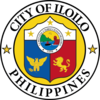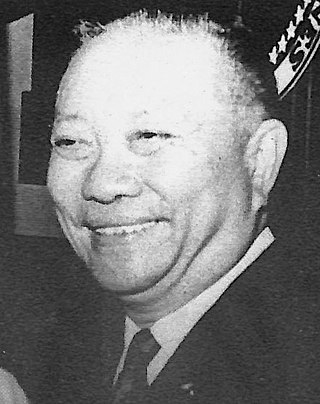
Fernando Hofileña Lopez Sr. was a Filipino statesman. A member of the influential Lopez family of Iloilo, he served as vice president of the Philippines for under Presidents Elpidio Quirino from 1949 to 1953 under the Liberal Party and Ferdinand Marcos from 1965 to 1972, under the Nacionalista Party. He was also the chairman of ABS-CBN Corporation from 1986 to his death in 1993.

The Church of Saint Augustine, also known as the Archdiocesan Shrine of Our Lady of Consolation and Cincture or the Immaculate Conception Parish, is a Roman Catholic church under the auspices of the Order of Saint Augustine located inside the historic walled city of Intramuros in Manila, Philippines. Completed in 1607, it is the oldest stone church in the country.

Iloilo City, officially the City of Iloilo, is a 1st class highly urbanized city in the Western Visayas region of the Philippines, located on the southeastern coast of the island of Panay. It is the capital city of the province of Iloilo, where it is geographically situated and grouped under the Philippine Statistics Authority, but remains politically independent in terms of government and administration. In addition, it is the center of the Iloilo–Guimaras Metropolitan Area, as well as the regional center and primate city of the Western Visayas region. According to the 2020 census, Iloilo City has a population of 457,626 people. For the metropolitan area, the total population is 1,007,945 people.

Mandurriao Airport(IATA: ILO, ICAO: RPVI), also known as Iloilo Airport during its operation, was an airport serving the area of Iloilo City and the province of Iloilo in the Philippines. The airport was located five kilometers northwest of downtown Iloilo City in the district of Mandurriao. It was the fourth-busiest airport overall and the busiest domestic airport in the Philippines, accommodating over 700,000 passengers and over 5,000 tons of cargo in 2005. During the construction of the new Iloilo International Airport, it was also known as Iloilo–Mandurriao Airport.

Pedro Calungsod, also known as Peter Calungsod and Pedro Calonsor, was a Catholic Filipino-Visayan migrant, sacristan and missionary catechist who, along with the Spanish Jesuit missionary Diego Luis de San Vitores, suffered religious persecution and martyrdom in Guam for their missionary work in 1672.

Jaro is a district in Iloilo City, Philippines, located on Panay Island in the Western Visayas region. It is the largest district in terms of both area and population, with 130,700 people according to the 2020 census. Jaro merged with Iloilo City in the 1940s during the American administration in the Philippines. It is also the largest among the seven districts of Iloilo City. La Paz district and the present municipalities of Leganes and Pavia were historically part of Jaro before becoming independent.

The PHINMA – University of Iloilo is a private, nonsectarian, coeducational institution in Iloilo City, Philippines. It was established in 1947 by the López family of Iloilo who founded the broadcasting giant ABS-CBN Corporation as Iloilo City Colleges. The university was later acquired by the business conglomerate group PHINMA Industries, and its current operations and management is controlled by the said company under its arm, PHINMA Education Network.

Iloilo International Airport, also known as Iloilo Airport, and as Cabatuan Airport, after the municipality of Cabatuan, Iloilo, where it is located, is the airport serving the province of Iloilo in the Philippines, including its capital city, Iloilo City, the regional center of the Western Visayas region. It opened its doors to commercial traffic on June 14, 2007, after a decade of planning and construction, replacing Mandurriao Airport in Mandurriao, Iloilo City, which had been in service for over seventy years. As a result, the new airport inherited its IATA and ICAO airport codes, as well as its position as the fourth-busiest airport in the Philippines, from its predecessor. It was the fifth-busiest airport in the Philippines in 2022. It is the first airport in both Western Visayas and the island of Panay to be built to international standards, and it is also considered to be the primary gateway into the region. It is classified as an international airport by the Civil Aviation Authority of the Philippines.
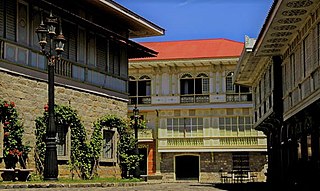
The architecture of the Philippines reflects the historical and cultural traditions in the country. Most prominent historic structures in the archipelago are influenced by Austronesian, American architectures.

Evelio Bellaflor Javier was a Filipino politician. He served as governor of the province of Antique and was an opponent of the dictatorship of President Ferdinand Marcos. His assassination on February 11, 1986, was one of the causes of the People Power Revolution that overthrew Marcos. Evelio Javier's brother, Exequiel Javier, served as congressman from 1987 to 1998 and from 2001 to 2010 and governor from 1998 to 2001, and 2010 to 2015. In 2018, Javier was identified as a Motu Propio human rights violations victim of the Martial Law Era by the Human Rights Victims Claims Board.
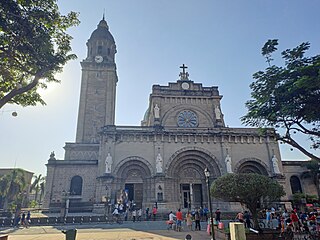
The Minor Basilica and Metropolitan Cathedral of the Immaculate Conception, which is commonly known as Manila Cathedral, is a Roman Catholic minor basilica and the cathedral church of the Archdiocese of Manila. It is located in Intramuros, the historic walled city in Manila, Philippines, and is dedicated to the Immaculate Conception of the Blessed Virgin Mary, the patron saint of the country.

The Metropolitan Cathedral of Saint Elizabeth of Hungary, also known as the National Shrine of Our Lady of the Candles and colloquially as Jaro Cathedral, is a cathedral located in the district of Jaro in Iloilo City, on the island of Panay in the Philippines. The seat of the Roman Catholic Archdiocese of Jaro, it was placed under the patronage of Saint Elizabeth of Hungary. It was established in 1575 as a visita (chapel-of-ease) of Oton by the Augustinians and as a separate parish in 1587. The present-day structure of Jaro Cathedral was built in 1874.

Ancestral houses of the Philippines or Heritage Houses are homes owned and preserved by the same family for several generations as part of the Filipino family culture. It corresponds to long tradition by Filipino people of giving reverence for ancestors and elders. Houses could be a simple house to a mansion. The most common ones are the "Bahay na Bato". Some houses of prominent families had become points of interest or museums in their community because of its cultural, architectural or historical significance. These houses that are deemed of significant importance to the Filipino culture are declared Heritage House by the National Historical Commission of the Philippines (NHCP), previously known as the National Historical Institute (NHI) of the Philippines. Preservation is of utmost importance as some ancestral houses have come into danger due to business people who buy old houses in the provinces, dismantle them then sell the parts as ancestral building materials for homeowners wishing to have the ancestral ambiance on their houses. These ancestral houses provide the current generation a look back of the country's colonial past through these old houses.
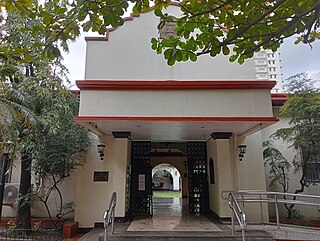
Casino Español de Manila is a club established in 1888 by Spaniards living in the Philippines as their exclusive venue for recreational and social activities. It later opened its doors to Filipino members to foster Spanish-Filipino ties in the country. It is located at No. 855 Teodoro M. Kalaw Extension, Ermita, Manila.

The Lopez Heritage House or Mansion de Lopez is a heritage house in Jaro, Iloilo City. It was built in 1928 by Ilonggo statesman Don Vicente Lopez and his wife, Doña Elena Hofileña, one of the earlier members of the prominent López family of Iloilo. The mansion was named after the couple's eldest daughter, Nelly Lopez y Hofileña. Due to its grandiose architecture highlighting the province's aristocratic past, it is regarded as the "Queen of Heritage Houses in Iloilo". The house and its 4 hectares property are open for public tours and events.

Calle Real, officially named as J.M. Basa Street, is a historic street located in the old downtown district Iloilo City Proper of Iloilo City, Philippines. The street often referred to as the "Escolta of Iloilo", and is also one of the country’s oldest business districts. It is home to several fine examples of historic luxury American era neoclassical, beaux-arts, and art deco buildings. The street has been famous since the Spanish Era. However, its importance has dwindled and the street has become less maintained; yet there have been efforts to revitalize the street, which include the restoration of the historic buildings along the street and beautification projects.

The Casa Real de Iloilo, also known as the Old Iloilo Provincial Capitol, was the seat of the provincial government of Iloilo in the Philippines since the Spanish colonial period until 2006. It also served as the residence of the alcalde-mayor, presidente municipal, or governor, who held the highest authority as the Spanish official in Iloilo during the period.

Iloilo City is a conglomeration of former cities and towns in the Philippines, which are now the geographical or administrative districts (boroughs) composed of seven: Arevalo, City Proper, Jaro, La Paz, Lapuz, Mandurriao, and Molo. All administrative districts are divisions of the lone congressional district of Iloilo City, and each is composed of barangays (barrios), with a total of 180 city barangays.
Esteban de la Rama was a Filipino general during the Philippine Revolution, entrepreneur and politician of the Nacionalista Party (NP), who became a member of the Philippine Senate from 1941 to 1947.




















